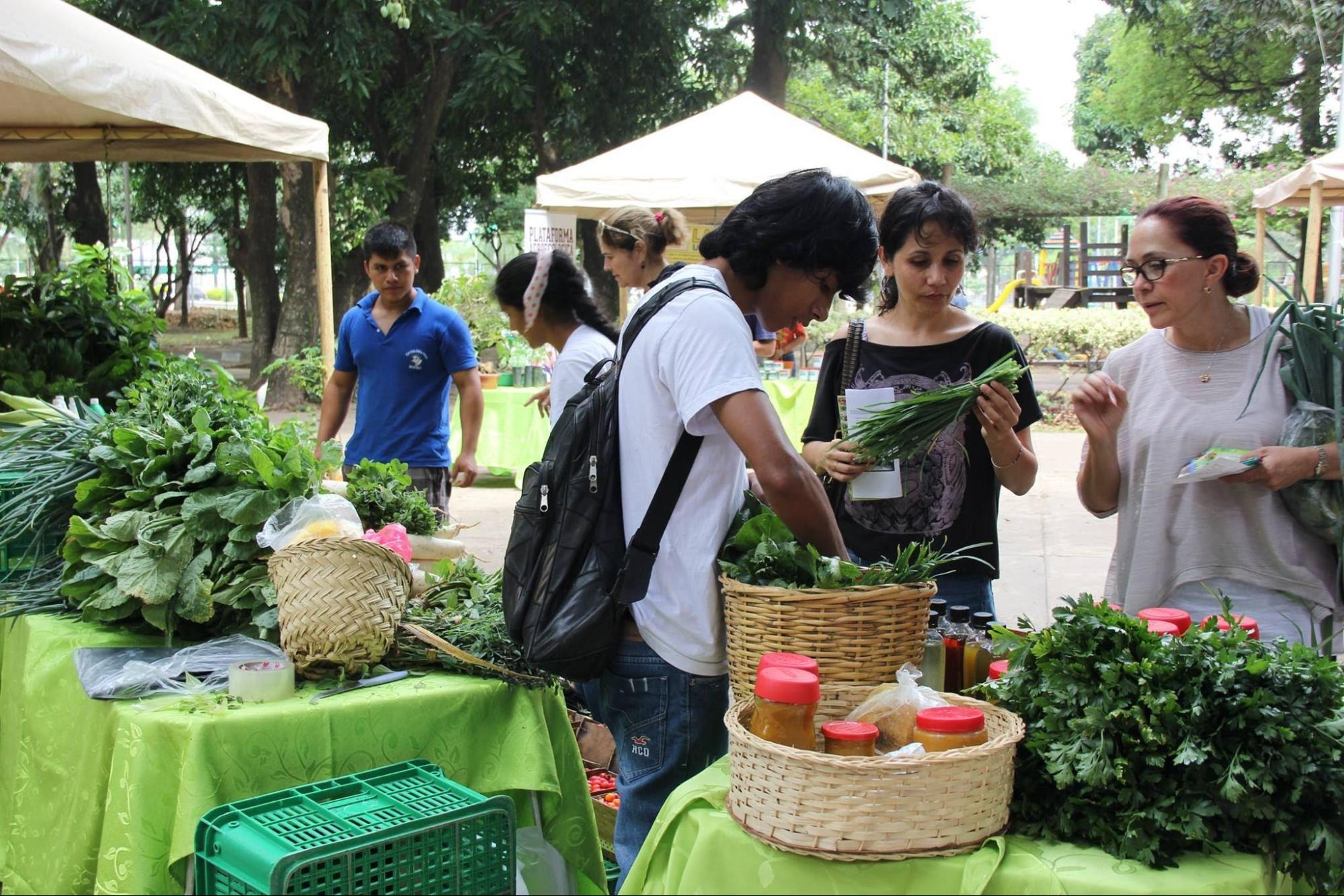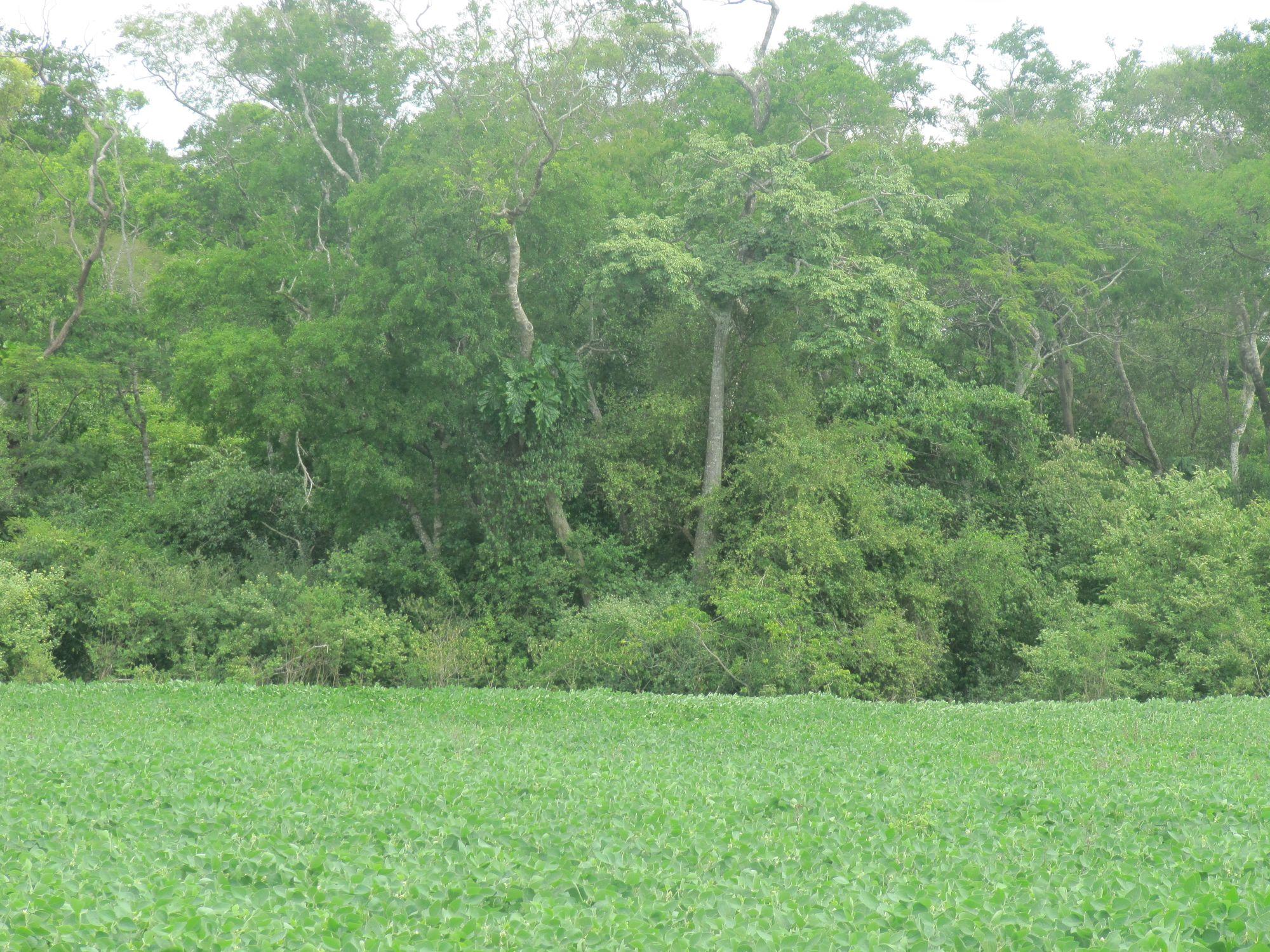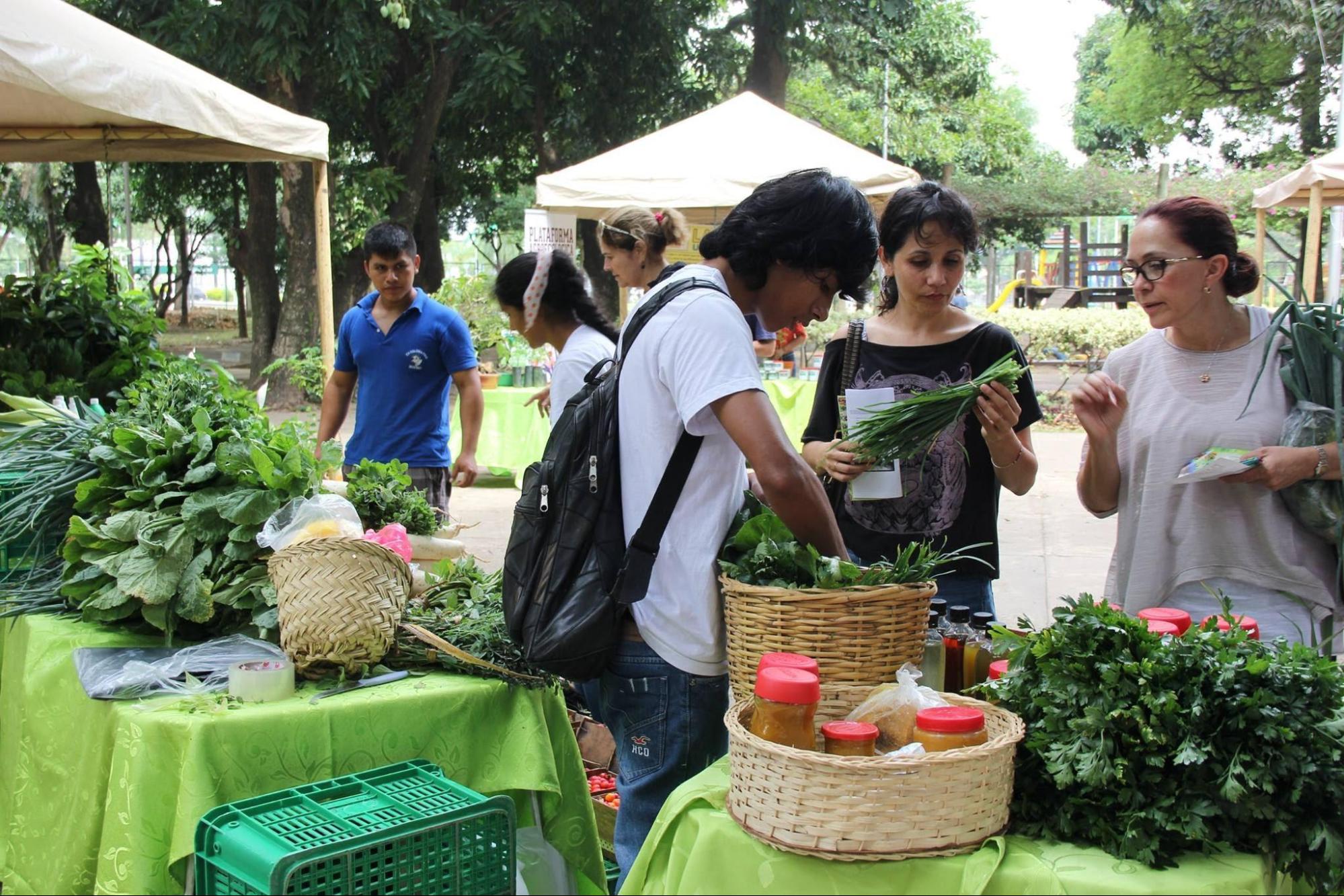This blog post is by Dr Johanna Jacobi, Senior Research Scientist in the Sustainability Governance Cluster at the University of Bern’s Centre for Development and Environment. Johanna Jacobi is a geographer and biologist who has been living and working in Bolivia for six years. She currently implements research in two projects, one about 'food sustainability' (the topic of this blog), and one about 'high-quality coffee and coffee cherry value chains in the origin countries Colombia and Bolivia'. She is interested in agroecology as a science, a set of practices and a social movement and is also a member of SOCLA (Latin American Scientific Society of Agroecology). One key topic in her research activities has been agroforestry and its role in food security and the resilience of farming systems.

I am Johanna Jacobi, living and working in Bolivia on the topics of agroecology and sustainable food systems. I am doing research and involved in coordinating the project “Towards food sustainability: Reshaping the coexistence of different food systems in South America and Africa”. I would like to get in touch with food system folks and together explore the best pathways from research results to action.
The basic idea of this project is to move beyond the concept of food security by taking a broader sustainability perspective and by asking who produces what kind of food, for whom, how it is consumed, and what the environmental and social impacts are. When we talk about the sustainability of food systems, we thought, we should take into account at least five pillars: food security, of course, but also poverty and inequality, environmental impacts, the right to food, and the resilience of a given food system. The rationale behind each pillar is explained here. Because Bolivia and Kenya both have the right to food in their rather recent constitutions (Bolivia: 2009, Kenya: 2010), we decided to work in these countries.


A food sustainability framework we co-developed (Bolivia-Kenya-Switzerland) in the project. For three years, an interdisciplinary team assessed indicators for these five dimensions.
I have been working more in Bolivia, so I will tell my story about Bolivia. Here we decided to work in three food systems in Santa Cruz (because there are many conflicts here, including deforestation, large-scale monocultures, land grabbing, and fumigation with airplanes). There, soybean is being produced on more than one million ha (which is about one-third of Bolivia’s cultivated surface). Soybeans are used for many purposes, for example, cooking oil is extracted before export. Therefore, we selected this “soy cluster” as an agroindustrial food system, trying to follow the products as far as we could. In the sea of soybean are also local indigenous communities of the Guaraní people whose world view and food system are constructed around maize. This we studied as a second food system. And, looking for alternatives to yet more soybean, we identified a small network of producers and consumers, the “Agroecological Platform” operating in and around the city of Santa Cruz, which we denominated “differentiated quality food system” (following this book).
Being a research team of geographers, agroecologists, anthropologists and lawyers from five universities, we started to investigate those case studies according to our different disciplines. A food security survey following FAO guidelines yielded completely different results to what the anthropologists who lived for months in the communities observed: the mothers would never tell if their families were food insecure during the last year, let alone to a white European person they did not know. But, having a closer look, there was much food insecurity, especially in the Guaraní communities. Their husbands worked in the nearby oilfields only coming home every two weeks, and the family depended on them bringing money home: a dependency that caused much domestic violence. Sometimes there was just a bit of rice to eat. People had abandoned their traditional Milpa systems – sometimes also known as the “three sisters”. A Milpa is a combination of maize, beans and squash traditionally used throughout the Americas – the beans fix nitrogen for the maize and the squash, the maize is the stick for the bean, and the squash covers the soil and keeps it moist, to name only some of its virtues. One day we organized a “food festival” and asked the people in the village of Yatirenda to cook traditional dishes and sell them. They then prepared more than 25 different dishes, which were – besides a fried armadillo – all based on the Milpa system, e.g. mashed maize, bean soups and a pumpkin drink. We were impressed by the diversity but astonished that they had had to go to the city of Santa Cruz to buy the ingredients because they did not produce them anymore.
 Guaraní food festival, February 2017 in the village of Yatirenda, Bolivia: Diversity in agriculture, markets and diets combined with local knowledge is crucial to food sustainability. Photos: Johanna Jacobi.
Guaraní food festival, February 2017 in the village of Yatirenda, Bolivia: Diversity in agriculture, markets and diets combined with local knowledge is crucial to food sustainability. Photos: Johanna Jacobi.
Food security in the soybean areas was also poor: not so much because of monetary poverty, but because of a uniform diet consisting of deep-fried chicken and rice, for breakfast, lunch and dinner. Women in the communities told us that it was impossible to grow anything else than glyphosate resistant plants, because broadband herbicides were sprayed with airplanes – as one of our PhD candidates found in his (so far unpublished) study on environmental impacts of food systems – up to eight times per crop (90–105 days, two crops per year).

 Zero deforestation? Soybean monoculture in the San Pedro Municipality, Santa Cruz Department, Bolivia next to the rainforest. The “agricultural frontier” advancing into forest areas as a symbol for development, as well as for destruction is a big discussion in the country. Photo: Johanna Jacobi.
Zero deforestation? Soybean monoculture in the San Pedro Municipality, Santa Cruz Department, Bolivia next to the rainforest. The “agricultural frontier” advancing into forest areas as a symbol for development, as well as for destruction is a big discussion in the country. Photo: Johanna Jacobi.
In the agroecological food system, one of the main activities besides mutual certification of agroecological practices was a monthly fair to sell their products in the City of Santa Cruz. I also participated twice selling coffee (I am part of a small Bolivian coffee enterprise), and I can confirm that the fair was very successful: I and also others sold everything we brought before the fair was over. There is, without doubt, a large demand for “healthy” products that is underserved at the moment. The potential for the Agroecological Platform is potentially huge. A challenge is that they receive very little support from the local government (also rejection) in finding spaces for their activities.

 Agroecological fair in the city of Santa Cruz de la Sierra, 2016. Photo: Plataforma Agroecológica.
Agroecological fair in the city of Santa Cruz de la Sierra, 2016. Photo: Plataforma Agroecológica.
With the project, we are now in the phase of selecting places or groups with whom we move into collective action. In so-called Transformative Pilot Actions, the project will support concrete initiatives or policies that make food systems more sustainable. In the Municipality of Sucre, a “new” food system we work in in the second phase of the project, we applied our Food Sustainability Assessment Framework (“FoodSAF” in short) with a reduced set of indicators (three indicators for each dimension), and identified together with local food system actors a need for an educational programme for urban agroecology practitioners. In view of our possible contribution as academics, we submitted a proposal for a joint implementation of a municipal school for agroecology and are currently exploring the pathways for its implementation.
I would like to end with a message to everyone who is interested in the topic of food sustainability and/or the project activities: please get in touch, and let’s discuss ways to improve food sustainability. I am keen to connect with people and organisations who aim to explore and transform food systems with the goals of sustainability and justice.
Find publications from Johanna's project here.
To start a conversation with Johanna and others about her work and how it might connect with yours or the work of others, send an email to the FCRN's Google group. You can join the Google group here.











Post a new comment »